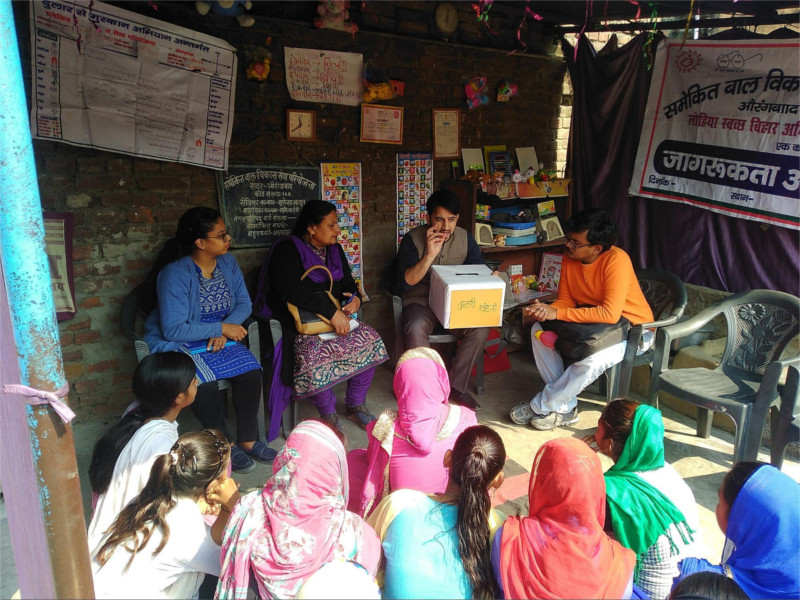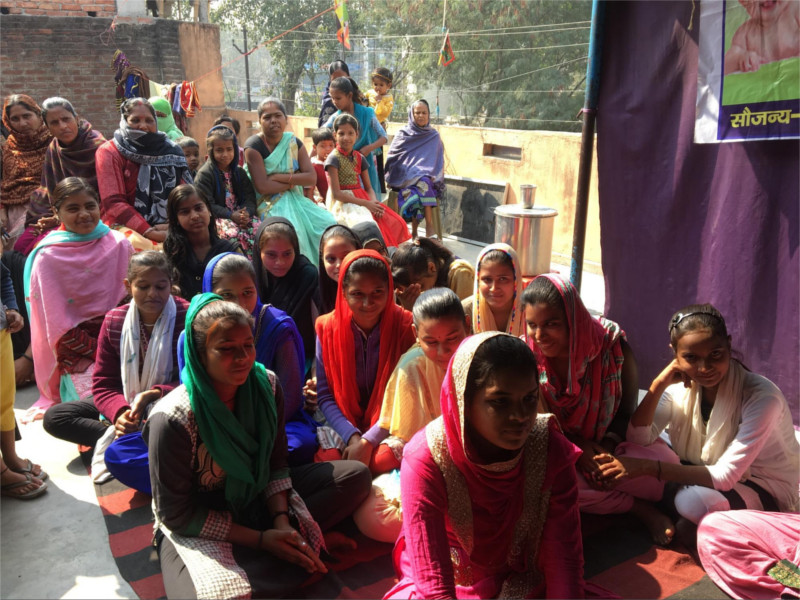Kishori Club – Aurangabad, Bihar
Basic question to be solved:
The Kishori Club and Tumhari Saheli Question Box, will go a long way in empowering adolescent girls as engines of change for the society. The primary objective through these Kishori Clubs would be to initiate a dialogue on issues of puberty,girl education, early child marriage and malnutrition in the immediate peer network and the society.
Perspective/Context
Aurangabad district is predominantly a rural farming community with high rates of poverty and disease. With adolescents representing nearly 35% of the total population size, it makes adolescents extremely vulnerable due to lack of access to facilities that could provide them with due services and support. District administration along with TADP cell is resolute to serve this quandary in order to ensure torch-bearers of tomorrow have strong foundation laid down in their present. From within the adolescent categories, working with adolescent girls becomes even more important primary because of growing gender gap and patriarchal nomenclatures. It is pivotal to ensure that these girls directly and indirectly associated with AWC are nurtured the bloom and be the engines of the change. Since, even today majority of adolescent girls on the mere onset of puberty that occurs during adolescence marks a time of heightened vulnerability—to leaving school, child marriage, early pregnancy, HIV, sexual exploitation, coercion and violence. Adolescent girls are less likely than older women to access sexual and reproductive health care, including modern contraception and skilled assistance during pregnancy and childbirth, which makes it important to empower them.
Stakeholders
The vision of Kishori Clubs is to empower adolescent girls, which makes them the primary stakeholders followed by the AWWs i.e. the Anganwadi Sevikas. This initiative would be supported and strengthened on lines of convergence between various departments of the district including ICDS department, Health Department and TADP cell. While externally it can be supported by CSR and NGO’s, in order to facilitate a process where Kishori’s are able to lead the community based events and engage mass community sensitisation drives.
Criteria for Success
2880 adolescent change makers would be directly empowered by the program. This is expected to benefit 20160 adolescent girls through peer education and knowledge dissemination.
The qualitative impact of the project would entail helping these 2880 adolescent girls develop leadership qualities and be able to be the engines to the change of the society. Through these clubs we expect them to become well aware and help in sensitizing the communities they’re a part, predominantly on:
- Promoting girl child education
- Prevent child marriages and avoiding teenage pregnancies
- Promote healthy eating to prevent anemia and improve overall nutritional status among adolescent girls. (food rich in iron, vitamins etc.).
- Create awareness on healthy/ hygienic practices during menstruation, promote use of safe sanitary practices
Constraints within the initiative
Each initiative comes with own baggages of constraints. Principal constraint remains how to ensure that group remains sustainable with or without financial support. Adding to it, how adolescent girls could cope up to the resistance from the society and immediate family.
Key Sources of Insight
https://www.dailypioneer.com/2018/vivacity/rooting-out-child-marriages-in-bihar.html
http://www.brac.net/education-programme/item/782-adolescent-development-programme


Categories
Disclaimer: This site is dedicated to efforts of Aspirational District Fellows in 35 Districts supported by Ministry of Home Affairs. This is not the official website of Aspirational Districts Programme or linked in anyway to Government of India or it's department. © Copyright 2020 Transformation of Aspirational District Programme. All Rights Reserved.
Wonderful Theme

